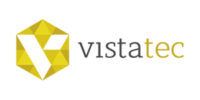By Elizabeth Riley, Director of Solutions Architecture, Vistatec
and Giulia Mattoni, MT Program Manager, Vistatec
Quality Translations for International Growth
The broad reach of modern technology has connected businesses well beyond national borders and made available vast new opportunities for global growth. Practically every industry shows some potential for success via international markets, but life sciences are one that is particularly abundant.
Aging populations and greater prevalence of chronic health conditions combined with more frequent surgical procedures and complex medical interventions mean that the global medical device and pharmaceutical markets are likely to grow more rapidly than others. Already valued at US$425.5 billion in 2018, these markets are projected to reach US$617.2 billion in 2025. [1]
Language and quality translation plays a significant part in unlocking global success. Regardless of industry or vertical, to be globally competitive and successful ultimately requires translation. Whether translating instructions for use, offering a localized user interface, creating foreign-language websites, and marketing materials or even sales training in another language, life sciences companies have a constant and varied stream of content that needs to be translated to support growth in new markets.
Full-spectrum language services providers like Vistatec are, of course, available to assist with the full range of expert language services. Market pressures mean that any company able to shorten time to market or cut translation costs has an advantage over its rivals. In life sciences, the environment can be particularly competitive.
We see more and more customers considering machine translation (MT) coupled with human post-editing as an aid in procuring multilingual content faster and cheaper. Medical device and pharmaceutical manufacturers endure some of the most onerous and complex foreign-language documentation and regulatory requirements, which result in extremely large translation and localization budgets; if time and money can be saved by implementing MT, most life sciences companies are interested to hear how it can be done.
Deploying machine translation in this highly regulated landscape can be complex and risky. But it is certainly not impossible and can reap rewards for anyone who is willing to think creatively by challenging conventional thinking about translation process in life sciences.
Machine Translation’s State of the Art
Many industries employ MT in enterprise-level localization programs to great success. The key is understanding the nuances in what’s available and how to integrate it into a translation workflow designed to deliver quality outcomes.
Systran, a leading provider of neural MT software and solutions, boasts several customer case studies outlining enterprise use of their engines and platform. [2] Some companies, such as pharmaceutical giant Boehringer Ingelheim, utilize MT solutions to allow individuals throughout their organization to translate a variety of content, including texts, emails, web pages, RSS feeds, and documents in a range of file formats. [3] A web-based interface accessible to the entire organization allows over 25,000 users access to raw, i.e., unedited, MT in a secure format that complies with the company’s security requirements.
But other options are available too, for users whose needs require more than what raw MT can provide. MT plus post-editing (MTPE, aka PEMT) can fit the bill for content whose quality threshold is higher. Nowadays, there are more MT providers on the market than ever before, and the quality of their MT engines exceeds anything previously seen—and is particularly impressive for certain language pairs. [4] Combined with a human post-edit, quality can be on par with what a standard translation process would promise.
It’s easy to see how a range of quality expectations can be met with MT. Most agree that MT is easier implemented in industries less regulated than the life sciences. Yet, that doesn’t render it impossible.
Translation Demand: No End in Sight for Life Sciences
Constantly changing regulatory requirements in the life sciences have forced increased translation demand, promoting in turn, greater interest in and adoption of automated processes that can help speed up the translation process or obtain foreign-language content faster and at a lower cost. Machine translation is one such automation that has attracted a great deal of interest.
The European Union Medical Device Regulation (EU MDR), which took effect in 2017, becomes mandatory in EU member states this year. Starting May 26, 2020, MDR will not only expand the scope of what is considered a medical device and labeling requirements for such, but the regulation will also further require that medical device content is translated into the official language(s) of each member state where the product will be marketed. [5] While the net effect on translation volumes remains somewhat uncertain, most experts predict some uptick in work owing to MDR.
Similarly, for clinical research organizations and study centers, outsourcing trials to emerging markets have also contributed to the upswing in translation requirements as studies are moved from the US to India, China, Eastern Europe, and Latin America. [6] Study protocols, patient questionnaires, informed consent forms, and numerous other standard trial documents and forms, not to mention anything that might make up a subject’s case file, thus require accurate and timely translation, and into a greater array of languages including any of the locations around the globe where trials are held, and subjects enrolled.
Clearly, translation volume for life sciences is on the rise. The question is then how to leverage MT. Is there a place in this industry for machine translation when a full-process human translation is considered the gold standard?

The Importance of Risk Management and Patient Safety
Content that life sciences and clinical organizations subject to translation tend to be highly sensitive to error. Instructions for use (IFUs), product package inserts, patient-facing information; all of these and the myriad other types of content produced by device and pharma companies require a great deal of care to ensure accuracy and eliminate errors. Hence, a typical translation process comprises at least three steps, sometimes more: translation, edit, and proofreading. Certain specialized content types frequently tack on subject-matter/expert review or quality assurance steps that are carried out by an independent in-country linguist or product expert.
With patient safety at play, the one-step raw MT only process is certainly not a suitable replacement for the usual human translation process designed to eliminate errors and attain the highest possible levels of translation fluency and accuracy. But MT can—and does—still have useful applications, even in this landscape.
Putting it All Together: MT Engine Types and Process Differences
To see how MT can be used in a regulated, risk-focused business, let’s first unpack the MT jargon and provide some definitions.
Neural machine translation (NMT) is one of the MT paradigms that has proven to outperform the existing Statistical Machine Translation (SMT) in terms of fluency and accuracy. When research on SMT capabilities and quality estimation plateaued, NMT became the new focus in both industry and academia.
Neural MT is based on deep neural networks, and the language models are trained end-to-end using large parallel training data. Output generated by the MT engines is generally called ‚raw‘ MT output. This is the target language text prior to any human editing, either light or full post-editing.
Depending on the MT provider and their offering, MT engines can be ‚off-the-shelf‘ or ‚customized.‘
● Off-the-shelf engines, also known as stock engines, are built by MT providers such as DeepL, Google, or Microsoft and use millions of words that can be generic or domain-specific.
● Customized MT engines are based on a stock engine that is further trained with additional in-domain client data such as translation memories and glossaries. This allows for even greater precision in output.
In an industry with heavy reliance on specialized terminology, customized MT engines can offer significant advantages. With the ability to learn industry and client-specific terminology, a customized neural MT engine can be used by a medical device, clinical research, or pharma translation teams as an aid to creating a sound translation process even for regulated content. Neural MT with human post-edit and quality review/assessment, plus periodic engine retraining, is one possibility of a cost-and time-saving full quality process scenario.
Although theoretically, most content could benefit from the improved quality that a trained, customized MT engine would generate, budgets, schedules, or priorities may not always match up with the additional effort. Generic, non-customized MT engines can still be useful. Informational-use only documents or in-house content can be candidates for MT, as the case studies described above. When a gist translation suffices, MT is a massive time- and cost-saver. Raw MT, or MT plus a light post-editing step, are both viable options depending on your quality expectations and requirements.
John Tinsley, CEO of Iconic Translation Machines Ltd., shares an example. „A lot of the information generated … doesn’t necessarily need to be translated for external stakeholders, but rather for in-house teams. In this case, raw machine translations can be more than sufficient and give the teams access to information they would not typically be able to access on-demand.“ [7]
As a guiding principle, consider the intended use of the content to be translated. Is it enough to parse the meaning of the content to determine which areas, if any, may require full process translation for high accuracy? Think about whether you can use raw MT to generate a rough translation of the content if it’s only for internal use. Is the process truly required by regulatory requirements, or are you simply following the translation status quo? You may discover considerable amounts of content that will never see the light of day outside your organization, which can be gist-translated much more rapidly and less expensively with MT.
But what About the Quality?
Companies still worry about the quality of the MT output, even when customized neural MT engines are employed, but the offering of neural MT machine providers is large, and it is very reasonable to expect good quality output when combined with post-editing. [8]
Several MT providers also integrate with translation management systems (TMS) and other parts of the translation technology stack. The combination of an MT engine and TMS-enabled, semi-automated translation project workflow, when implemented in a company with vast amounts of translation content, can allow users across the organization to obtain varying kinds of machine-translated output in a range of acceptable quality for a less than the typical cost of pure human translation. This workflow can also confer benefit by allowing the customized NMT engine to be slotted into TMS-powered automated workflows to reduce time and costs on otherwise manual linguistic steps.
Yes, but isn’t Security Still an Issue?
Data security is a central focus in the life sciences industry, owing to patient safety and risk management aspects that underpin all processes and procedures. For this reason, life sciences customers convinced of its quality can nonetheless still be cautious of MT engines, fearing non-confidentiality, data leakage, loss of information control, or worse.
MT and language-service providers boasting certification to the ISO 18587:2017 standard (of which Vistatec is one) help their clients alleviate security concerns about machine translation; the standard provides universal requirements to ensure the quality of MTPE services. Companies who have obtained the certification provide their customers additional reassurance knowing that their MT processes are compliant with an international standard designed to ensure effective post-editing of output from machine translation to guarantee a high standard of quality thorough review by a specialist. Free, web-based MT engines, on the other hand, offer no such security. Keep this in mind when you consider using these options.
Savings: Time and Cost
„How much will I save using MT?“ Process matters, as does content type, not to mention the cost of training engines, as well as the language combinations you require. In short, pricing MT is contingent on a number of variables. It’s not just about how many words and the number of languages that determine the money you can save and the reduction in time.
Very generally, however, we often see reductions anywhere from 10-40% by implementing some form of machine translation in our customers‘ workflows, with the time and cost savings increasing as more languages and/or words are added to the process in a scalable way. If you’re interested in what MT can do for your budget or content release schedule, contact us for a feasibility study. You’ll walk away with a clear idea of how MT can be applied in your current process and a realistic idea of how much you can save.
The Upshot: Yes, Virginia, there is a Place for Machine Translation in Life Sciences
Life science customers have good reason to be cautious when venturing into AIpowered translation processes, but the negative perceptions of MT are slowly giving way to concrete evidence of its numerous practical applications, even in highly regulated environments.
Businesses in medical devices, pharmaceuticals, and clinical research that prioritize accuracy, patient safety, and risk management in localization may always approach emerging technologies like MT with some initial trepidation. But a properly informed evaluation of the possible advantages of MT, whether in permitting cost savings or greater productivity or anything in between, may reveal some way to use these innovative technologies in their work.
MT is here to stay. Why get left behind? Let Vistatec help determine how you could be using MT in your organization starting now.
References
[1] Fortune Business Insights, Medical Devices Market Size, Share and Industry Analysis by Type, End-User, and Regional Forecast, 2019-2025. Published Apr 2019. https://www.fortunebusinessinsights.com/industry-reports/medical-devicesmarket100085#:~:text=The%20global%20medical%20devices%20market,of%205.4%25%202 018%20to%202025.
[2] [3] Boehringer Ingelheim Case Study by Systran. Published 2019. https://www2.systransoft.com/boehringer-ingelheim-case-study
[4] [8] State Of the Machine Translation By Intento Stock Engines. Published Jun 2019. https://www.slideshare.net/KonstantinSavenkov/state-of-the-machinetranslation-by-intento-stock-engines-jun-2019
[5] Deadline 2020: What Lsps Need To Know About the Eu’s New Medical Device Regulation Demand Drivers by Seyma Albarino. Published Nov 2019. https://slator.com/demand-drivers/deadline-2020-what-lsps-need-to-knowabout-the-eus-new-medical-device-regulation/
[6] To Outsource or Not To Outsource? That Is the Question By Clinical Trials Arena. Published Nov 2018. https://www.clinicaltrialsarena.com/analysis/to-outsource-ornot-to-outsource-that-is-the-question/
[7] The Growing Role Of Neural Mt in the Life Sciences By John Tinsley. Published Aug 2019. https://magazine.multilingual.com/previewissue/july-aug-2019/the-growingrole-of-neural-mt-in-the-life-sciences/
About Vistatec
We have been helping some of the world’s most iconic brands to optimize their global commercial potential since 1997. Vistatec is one of the world’s leading global content solutions providers. HQ in Dublin, Ireland with offices in Mountain View, California, USA.
To learn more about Vistatec please visit: www.vistatec.com

